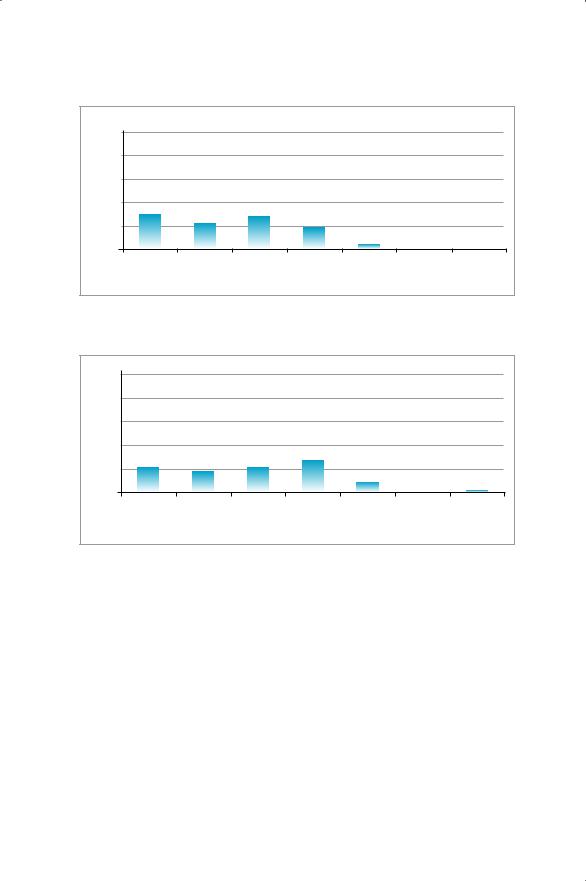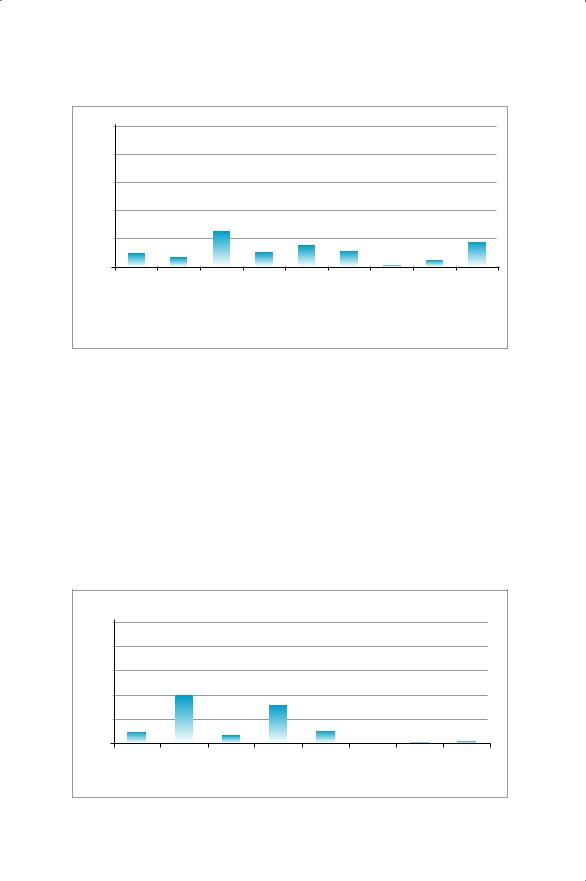
NPAC 2014 Proceedings_final
.pdf
214 |
Comparing National Arctic Policies |
PAN-GOVERNMENT ARCTIC POLICY MASTER PLAN4
Obtaining observer status with the Arctic Council has provided Korea with opportunities to develop domestic policy-making processes aimed at promoting common interests and cooperation in the Arctic. In addition, this new status opened provided an opportunity to establish diverse relations with the Arctic Council and its subsidiary bodies as well as to promote bilateral and multilateral cooperation with various stakeholders in the Arctic. This makes it natural for Korea to establish a policy framework to promote effective cooperation activities and to enhance capacity related to the research and business in the Arctic region. Through seven months of consultation with seven ministries (i.e., MOF,5 MOFA,6 MSIP,7 MOE,8 MOTIE,9 MOLIT,10 and KMA11) and a number of research institutes (i.e., KMI,12 KOPRI,13 KRISO,14 KIGAM,15 etc.), Korean officials developed an integrated plan for Arctic cooperation. This plan was approved as the 1st Pan-Government Arctic Policy Master Plan by the Cabinet Council in December 2013.
Vision and purpose
The vision of the Master Plan is to promote a sustainable future for the Arctic region through global, regional and local cooperation. Some principles, such as “peace and stability by international regime,” “technological innovation for smart development,” “protection of the environment,” and “welfare of and sustainable development for the Arctic people” were considered.
By implementing the Master Plan, Korea aims to fulfill three policy goals: (1) establishing an Arctic partnership, (2) strengthening scientific research capacity, and (3) seeking new business opportunities. The Master Plan will maintain a consistent policy framework by forming an institutional mechanism to support the policy goals and to insure that they are put into action and reviewed.
From 2013 to 2017, 31 key projects will be implemented under four major programs, elaborated in the following sections:
1.Strengthening international cooperation with the Arctic region;
2.Encouraging scientific and technological research capacity;
3.Pursuing Arctic business opportunities; and

Korea’s Arctic Policy |
215 |
4. Securing a domestic institutional foundation.
Strengthening International Cooperation
To strengthen international cooperation, Korea will try to expand its engagement with the Arctic Council and its subsidiary bodies by forming a domestic consultative body and developing cooperative projects with Arctic stakeholders that contribute to the realization of Korea’s vision for the Arctic. In particular, the Master Plan presents a rationale for the importance of participating in the Arctic Council Working Groups and establishing a plan for Korean experts to participate in research projects with or related to the Working Group activities. Along with the Arctic Council, Korea will cooperate with Permanent Participants through international forums, scientific research, and support of their efforts to preserve their history, culture, way of life and traditional knowledge with their available capacities. In addition, Korea will focus on scientific research by planning and proposing international joint research projects through the use of Korean equipment, which includes a research icebreaker.
Encouraging Scientific and Technological Research
One of the main emphases in this program is to expand the function of the DASAN Arctic Research Station. The Master Plan will pursue expansion of laboratories at the station for geological research, climate observation, atmospheric science research, etc. There is also consideration the possibility of building a new independent station and the possibility of expanding research areas. Moreover, Korea plans to expand its research at the DASAN Arctic Research Station by broadening participation in the Svalbard Integrated Arctic Earth Observing System (SIOS) and participating in international joint research projects in the Svalbard region. This Master Plan will encourage use of the Korean icebreaker, the Araon, for research activities in the Arctic Sea.
Pursuing Sustainable Arctic Businesses
To pursue sustainable Arctic businesses, the Master Plan aims to promote the NSR as an important future transportation corridor. Korea will accumulate navigation experiences in ice-covered areas through

216 |
Comparing National Arctic Policies |
joint activities with leading Arctic maritime nations, establish both consultation services and market research support for Korean maritime logistics companies, and implement follow-up measures for test voyages via the NSR. In conjunction with the NSR, the Master Plan focuses on the development of Arctic navigation capacity through training courses; the pursuit of joint research to lay the foundation for sustainable Arctic resource cooperation; development of technology for shipbuilding and safe navigation for polar-class vessels, and development of offshore plant technology for deep water resource development.
Securing a Domestic Institutional Foundation
The Master Plan aims to secure an institutional foundation with two key tasks. The first task is to establish an institutional arrangement for a national polar policy. The Master Plan explains that Korea will pursue the enactment of legal grounds for cooperation in the Arctic region in order to gain support for the projects outlined in the Master Plan. The second task is to build a polar information service system that will collect, analyze, and provide comprehensive information on the Arctic to various domestic stakeholders.
FUTURE DIRECTIONS16
Although it is difficult to say that all Korean experts have sufficient understanding of the Arctic region and conducting surveys is not enough, this section offers some insights as to how Korea perceives Arctic affairs at this time.
In June 2014, a group of 55 Korean experts were asked to take a survey on the future of Korea’s participation in and contribution to matters related to Arctic affairs. The first question asked was to what degree can Korea contribute to cooperation in the Arctic region in the future through observer status with the Arctic Council. The experts had to answer on a scale of one to seven, one being the lowest with no contribution and seven being the highest with an extremely significant contribuion.
The results, represented in Figure II-6, show that the contribution level is fairly high. Out of 55 Korean experts, 29.6% believe that the benefit of observer status with the Arctic Council is extremely significant; 22.2% thought it was fairly significant, while 27.8% thought the contribution level

Korea’s Arctic Policy |
217 |
100%
80%
60%
40%
20%
0%
Extremely |
Fairly |
Signi cant |
Somewhat |
Little |
Very little |
No |
signi cant |
signi cant |
|
signi cant |
contribution |
contribution |
contribution |
Figure II-6. Contribution level of observer status with the Arctic Council for Korea’s cooperation with the Arctic region
100%
80%
60%
40%
20%
0%
Extremely Fairly high |
High |
Somewhat |
Low |
Very low |
No results |
high |
|
high |
|
|
|
Figure II-7. Korea’s performance level after implementing Arctic policies
was significant. Finally, 18.5% of the participants expected the contribution level to be somewhat significant, and only 1.3% expected Korea to make little contribution to Arctic cooperation and participation.
The second question was on Korea’s performance level since 2013. Similar to the previous question, experts had to use a scale of one to seven to determine this. As Figure II-7. shows, 27.3% of the experts consider Korea’s performance level to be somewhat high. A similar proportion of experts (21.8%) reported high and extremely high performance levels, while the proportion re;orting Korea’s performance level at fairly high was 18.2%. Finally, no experts thought Korea’s performance level was very low, but 1.8% of the participants believed there were no results regarding Korea’s performance when the Arctic policies were implemented.

218 |
Comparing National Arctic Policies |
100%
80%
60%
40%
20%
0%
CC |
EP |
SR |
T/E |
AS |
RD |
F |
IP |
AC |
CC: Climate Change, EP: Environmental Protection, SR: Scientific Research, TE: Technology and Equipment Development, AS: Arctic Sea Route and Shipping, RD: Resources Development, F: Fisheries Cooperation, IP: Indigenous People Cooperation, AC: Arctic Council Cooperation
Figure II-8. Main priority for Korea related to the Arctic policies and promoting cooperation
As for question three, experts were asked what the main priority should be for Korea in the area of promoting cooperation with the Arctic policies. As shown in Figure II-8, scientific research should be the main priority for Korea, at 25%. The Arctic Council came in second at 17.6%, whereas Arctic shipping was 14.8%. Resource development, technology and equipment, and climate change were fairly close at 11.1%, 10.2%, and 9.3%, respectively.
Lastly, experts were asked which Arctic state Korea should cooperate with the most as it advances and promotes Arctic cooperation at this time.
100%
80%
60%
40%
20%
0%
USA |
Russia |
Canada |
Norway |
Denmark |
Sweden |
Finland |
Iceland |
Figure II-9. Which Arctic state should Korea give cooperation priority to?

Korea’s Arctic Policy |
219 |
Unlike question three, the experts, as seen in Figure II-9, had fairly similar answers. Many believed that Russia should be the Arctic state Korea needs to work closely with, at 40%. Norway also ranked high at 31.1%; 9.4% answered the United States, and 6.6% said Canada. Denmark, which includes Greenland and Iceland, stands at only 10.4% and 1.9%, respectively. This result may be due to the current cooperation activities such as NSR transit and scientific cooperation in Svalbard.
SECTOR RESPONSES
Overall Arctic Strategy or Policy
Korea currently does not have a unified national strategy on Arctic affairs. The Pan-Government Arctic Policy Master Plan tries to combine the different projects in various government agencies and frame a more effective cooperation policy. The plan was endorsed by the Cabinet Council where it is expected to lead to a five-year rolling plan in the future. The Master Plan will become the basis for various projects in each governmental agency with continuous amendments and follow-ups on individual actions. It will also contribute to running effectively operational measures such as budget and organization.
Sectoral Policies
The Master Plan embraces the majority of the plans set forth by each agency, and detailed programs are expected to follow within the basic framework. With regard to the NSR, enhanced cooperation is expected with the main stakeholders such as nations utilizing the route and commercial shipping companies that own ice-class vessels. Support systems for vessels using the NSR will take place along with domestic regulations that correspond to transport and shipping regulations set forth by the IMO. Midand long-term infrastructure plans such as port redevelopment will be initiated to prepare for the use of the NSR in the future.
Balance between Development and Environmental Protection
The Master Plan proposes not only a business sector policy but also

220 |
Comparing National Arctic Policies |
involvement in the Arctic Council’s environmental protection activities, monitoring environmental changes by uing the Araon and the DASAN Arctic Research Station, expanding science research centers in the Arctic, developing technology to overcome sea pollution, and abiding by international environmental regulations. It also emphasizes communication and cooperation with indigenous peoples in the Arctic region in order to enhance understanding and ultimately to achieve sustainable development. Moreover, increased cooperation with Arctic states to develop science research labs and cooperation systems to support search and rescue activities is expected in the coming years.
Leading Departments
The major ministries addressing the Arctic agenda are the Ministry of Oceans and Fisheries (MOF), the Ministry of Foreign Affairs (MFA), the Ministry of Science, ICT and future Planning (MSIP), the Ministry of Trade, Industry and Energy (MOTIE), the Ministry of Land, Infrastructure and Transport (MOLIT), the Ministry of Environment (MOE), and the Korea Meteorological Administration (KMA). For Arctic research services, Korea has the Korea Polar Research Institute (KOPRI), the Korea Maritime Institute (KMI), and the Korea Research Institute of Ships and Ocean Engineering (KRISO). The MOF is leading the Master Plan, and a legal basis for Arctic activity support and a separate division in charge of the Arctic is currently under revision. KMI is currently focused on Arctic policy research that includes the NSR, socioeconomic affairs of the Arctic, and cooperation with the Arctic Council. KOPRI deals with the Arctic science station operation, research icebreaker activity, and research on natural resources and the environment. Lastly, KRISO concentrates on engineering research that is related to Arctic shipping and offshore plant facilities.
Factors Affecting Korea’s Arctic Policy
The Arctic policy of Korea is expected to receive support from various sources, as it has been selected as a national agenda by the Blue House. There are movements to create a domestic consortium for Arctic research with an increased research budget including environmental, natural scientific, engineering and socioeconomic research. The organization and functions among research institutes are becoming stronger with an agenda

Korea’s Arctic Policy |
221 |
including extending the Arctic science facility and building a second research icebreaker vessel. Limiting factors are weak policy experience, a shortage of research capacity, and a shortage of investment, and legislative support for Arctic affairs over the long run.
Status of Policy Implementation
With the implementation of the Master Plan, test voyages via the NSR, establishment of an Arctic research consortium, broad bilateral cooperation with other Arctic states, development of an Arctic information system, cooperation with the Arctic Council and its subsidiary bodies, and academic exchanges in economic development fields are under way. In addition, each key player is strengthening its capacity, such as expanding the activities of the Arctic Research Station, capacity building of research vessels, scientific research cooperation with the Arctic states, and exchanging information among academic experts. In addition, research institutes are also enhancing their international cooperation. For example, KMI joined the University of the Arctic as a non-Arctic member and initiated the North Pacific Arctic Research Community with participation from 13 organizations in China, Japan and Korea.
CONCLUSION
Korea’s interest in the Arctic is not merely limited to the economic area such as the NSR or resource development, but encompasses science, technology, climate, and the environment as well. A balanced approach to these various sectors will a key challenge for Korea in the future. In this regard, recent progress, such as obtaining observer status with the Arctic Council, developing the Pan-Government Arctic Policy Master Plan, and appointing Arctic affairs as a national priority will contribute to sustainable Arctic development.
Moreover, although the numbers may not be high, successful transits of the NSR and consistent interest and investment by Arctic states, neighboring nations, and the international community will certainly attract the Korean government and Korean corporations. The economic structure of Korea supports the Arctic as a vital partner, since Korea imports natural resources such as energy and minerals and exports goods and services

222 |
Comparing National Arctic Policies |
through shipping.
Yet, Korea still has a long road ahead in this realm. Korea must accumulate knowledge and experience in the Arctic, better understand Arctic cultures and their traditional way of life, and safeguard complicated security issues through cooperation with relevant stakeholders in the Arctic region. In addition, bilateral and multilateral cooperation must take place to enhance capacity from within, and collaborative efforts should be geared toward climate change and environmental protection of the Arctic nature. Ultimately, Korea should become a reliable partner to seek a future of togetherness by contributing to the sustainable development of the Arctic region.
Notes
1.The views expressed in this article are the sole responsibility of the author and do not reflect the views of KMI or the Korean government.
2.http://en.wikipedia.org/wiki/Central_Asian_Flyway
3.Ministry of Oceans and Fisheries of the Republic of Korea
4.This section has been adapted from the draft document of the Master Plan, and does not explicitly reflect the original text.
5.Ministry of Ocean and Fisheries
6.Ministry of Foreign Affairs
7.Ministry of Science, ICT and Future Planning
8.Ministry of Education
9.Ministry of Trade, Industry and Energy
10.Ministry of Land, Infrastructure and Transport
11.Korea meteorological Administration
12.Korea Maritime Institute
13.Korea Polar Research Institute
14.Korea research Institute of Ships and Ocean Engineering
15.Korea Institute of Geoscience and Mineral Resources
16.Please note that this analysis is based on an informal questionnaire survey of Arctic experts in the academic, business and NGO fields of Korea by the author. Officials from government agencies have been excluded.

PART III
ARCTIC STATE/NON-ARCTIC STATE ENGAGEMENT
223
